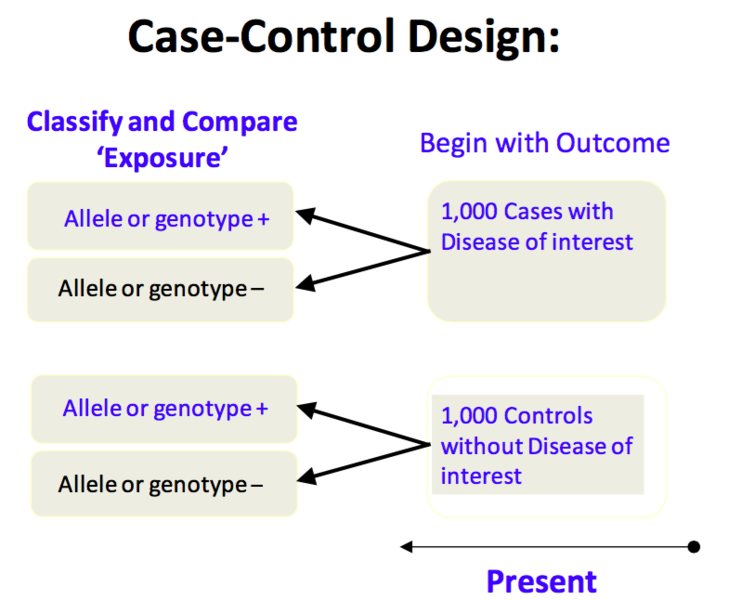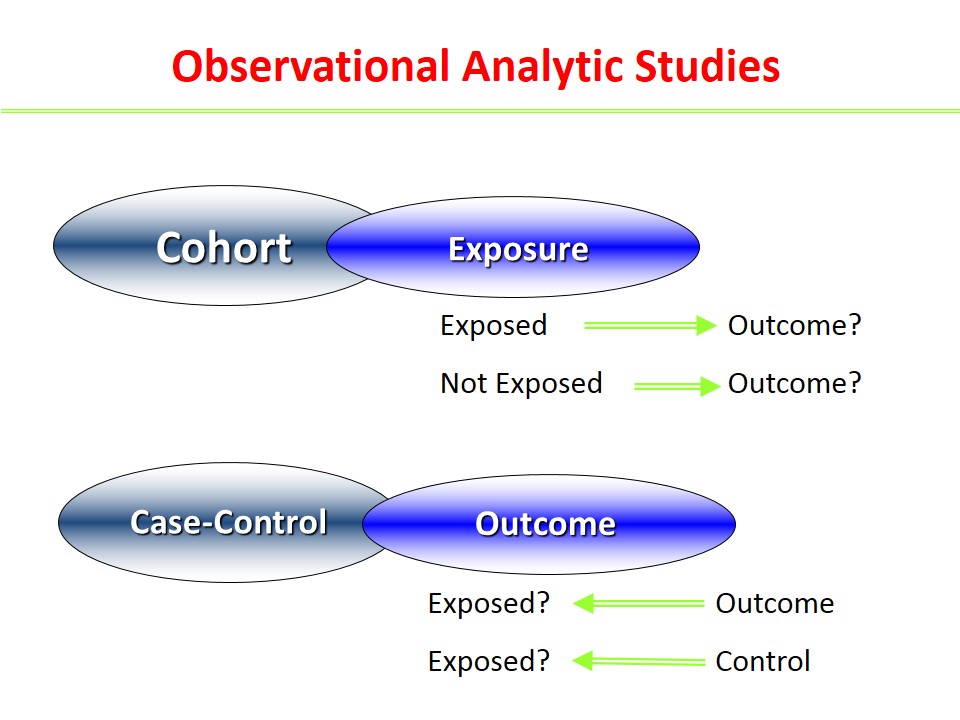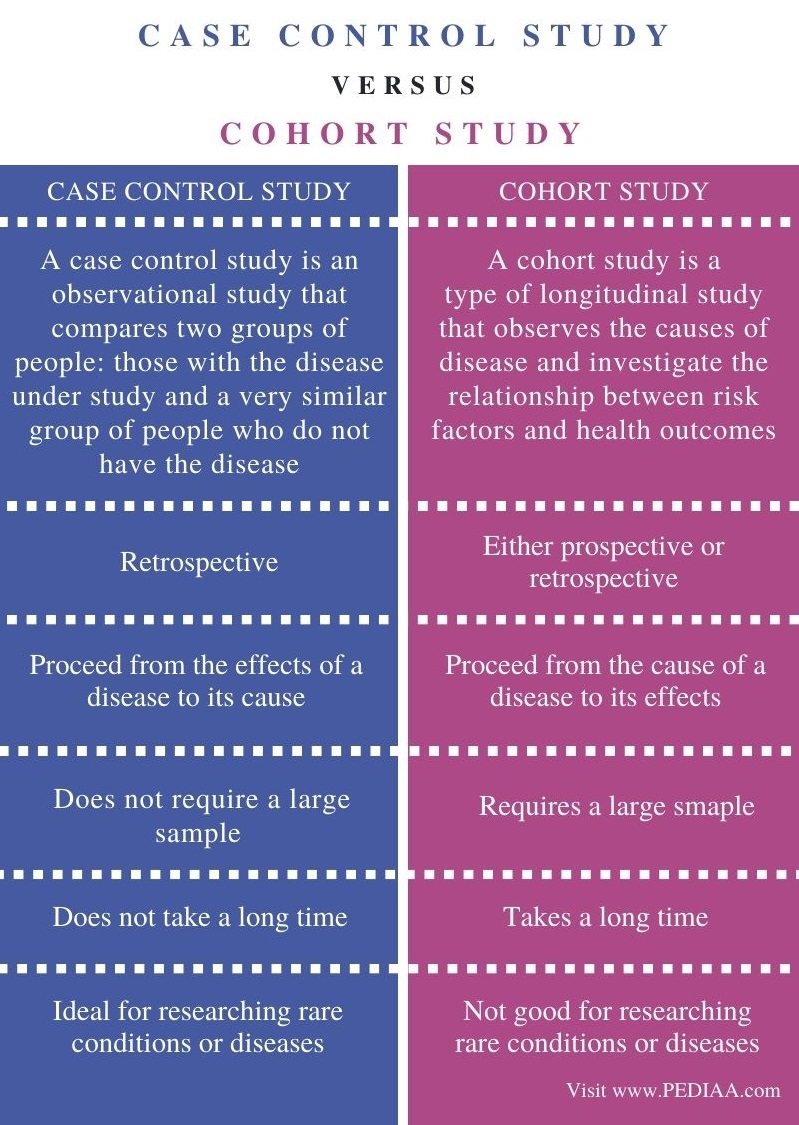

However, there were several limitations to the study they had done. The short video below provides a nice overview of epidemiological studies. The advantages to this approach were that they were able to collect the data they wanted relatively quickly and inexpensively, because they started with people who already had the disease of interest. They found that past smoking was much more common in the lung cancer cases, and they concluded that there was an association. They then compared the prior exposure histories with respect to smoking and many other factors. Smoking and Lung Cancer: For example, when investigators first sought to establish whether there was a link between smoking and lung cancer, they did a study by finding hospital subjects who had lung cancer and a comparison group of hospital patients who had diseases other than cancer. There are some situations in which more than one study design could be used. The best one to choose would be dictated by whether the outcome was rare or the exposure of interest was rare. A case-control study or a retrospective cohort study would be better options. Resources: If you have limited time, money, and personnel to gather data, it is unlikely that you will be able to conduct a prospective cohort study.
RETROSPECTIVE COHORT VS CASE CONTROL TRIAL
Ethics of Assigning Subjects to an Exposure: If you wanted to study the association between smoking and lung cancer, It wouldn't be ethical to conduct a clinical trial in which you randomly assigned half of the subjects to smoking.In this situation a cohort study is best. Uncommon Exposure: When studying an uncommon exposure, the investigators need to enroll an adequate number of subjects who have that exposure.Uncommon Outcome: If the outcome of interest is uncommon or rare, a case-control study would usually be best.

Decisions regarding which study design to use rest on a number of factors including::
related methods are risk (prospective), relative risk meta-analysis, risk difference meta-analysis and proportionsĬopyright © 2000-2019 StatsDirect Limited, all rights reserved. prone to the bias of change in methods over time. prone to attrition bias (compensate by using person-time methods). may uncover unanticipated associations with outcome. yields true incidence rates and relative risks. The following notes relate cohort to case-control studies: related methods are risk (retrospective), chi-square 2 by 2 test, Fisher's exact test, exact confidence interval for odds ratio, odds ratio meta-analysis and conditional logistic regression.Ĭohort studies are usually but not exclusively prospective, the opposite is true for case-control studies. controls are selected on the basis of not having the outcome. The following notes relate case-control to cohort studies: Prospective investigation is required to make precise estimates of either the incidence of an outcome or the relative risk of an outcome based on exposure.Ĭase-Control studies are usually but not exclusively retrospective, the opposite is true for cohort studies. You should take special care to avoid sources of bias and confounding in retrospective studies. In retrospective studies the odds ratio provides an estimate of relative risk. If the outcome of interest is uncommon, however, the size of prospective investigation required to estimate relative risk is often too large to be feasible. For this reason, retrospective investigations are often criticised. Most sources of error due to confounding and bias are more common in retrospective studies than in prospective studies. Many valuable case-control studies, such as Lane and Claypon's 1926 investigation of risk factors for breast cancer, were retrospective investigations. Prospective studies usually have fewer potential sources of bias and confounding than retrospective studies.Ī retrospective study looks backwards and examines exposures to suspected risk or protection factors in relation to an outcome that is established at the start of the study. All efforts should be made to avoid sources of bias such as the loss of individuals to follow up during the study. The outcome of interest should be common otherwise, the number of outcomes observed will be too small to be statistically meaningful (indistinguishable from those that may have arisen by chance). The study usually involves taking a cohort of subjects and watching them over a long period. Retrospective StudiesĪ prospective study watches for outcomes, such as the development of a disease, during the study period and relates this to other factors such as suspected risk or protection factor(s). 
Open topic with navigation Prospective vs. Prospective, Retrospective, Case-control, Cohort Studies - StatsDirect







 0 kommentar(er)
0 kommentar(er)
